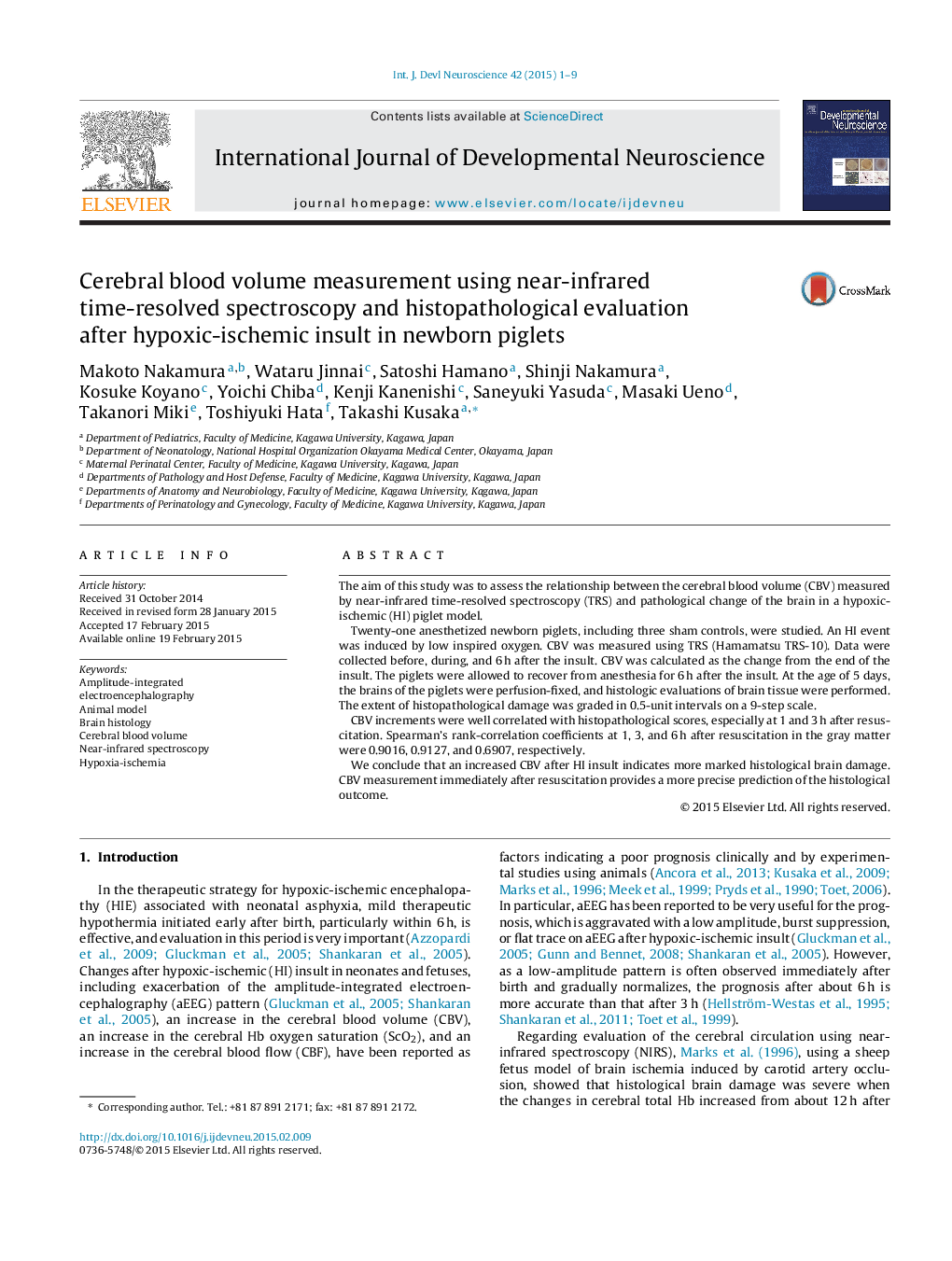| Article ID | Journal | Published Year | Pages | File Type |
|---|---|---|---|---|
| 2785870 | International Journal of Developmental Neuroscience | 2015 | 9 Pages |
•Increased CBV immediate after HI insult indicates histological brain damage.•Cortex was more vulnerable than hippocampus or cerebellum in this study.•NIRS measurement soon after resuscitation provides useful information.
The aim of this study was to assess the relationship between the cerebral blood volume (CBV) measured by near-infrared time-resolved spectroscopy (TRS) and pathological change of the brain in a hypoxic-ischemic (HI) piglet model.Twenty-one anesthetized newborn piglets, including three sham controls, were studied. An HI event was induced by low inspired oxygen. CBV was measured using TRS (Hamamatsu TRS-10). Data were collected before, during, and 6 h after the insult. CBV was calculated as the change from the end of the insult. The piglets were allowed to recover from anesthesia for 6 h after the insult. At the age of 5 days, the brains of the piglets were perfusion-fixed, and histologic evaluations of brain tissue were performed. The extent of histopathological damage was graded in 0.5-unit intervals on a 9-step scale.CBV increments were well correlated with histopathological scores, especially at 1 and 3 h after resuscitation. Spearman's rank-correlation coefficients at 1, 3, and 6 h after resuscitation in the gray matter were 0.9016, 0.9127, and 0.6907, respectively.We conclude that an increased CBV after HI insult indicates more marked histological brain damage. CBV measurement immediately after resuscitation provides a more precise prediction of the histological outcome.
